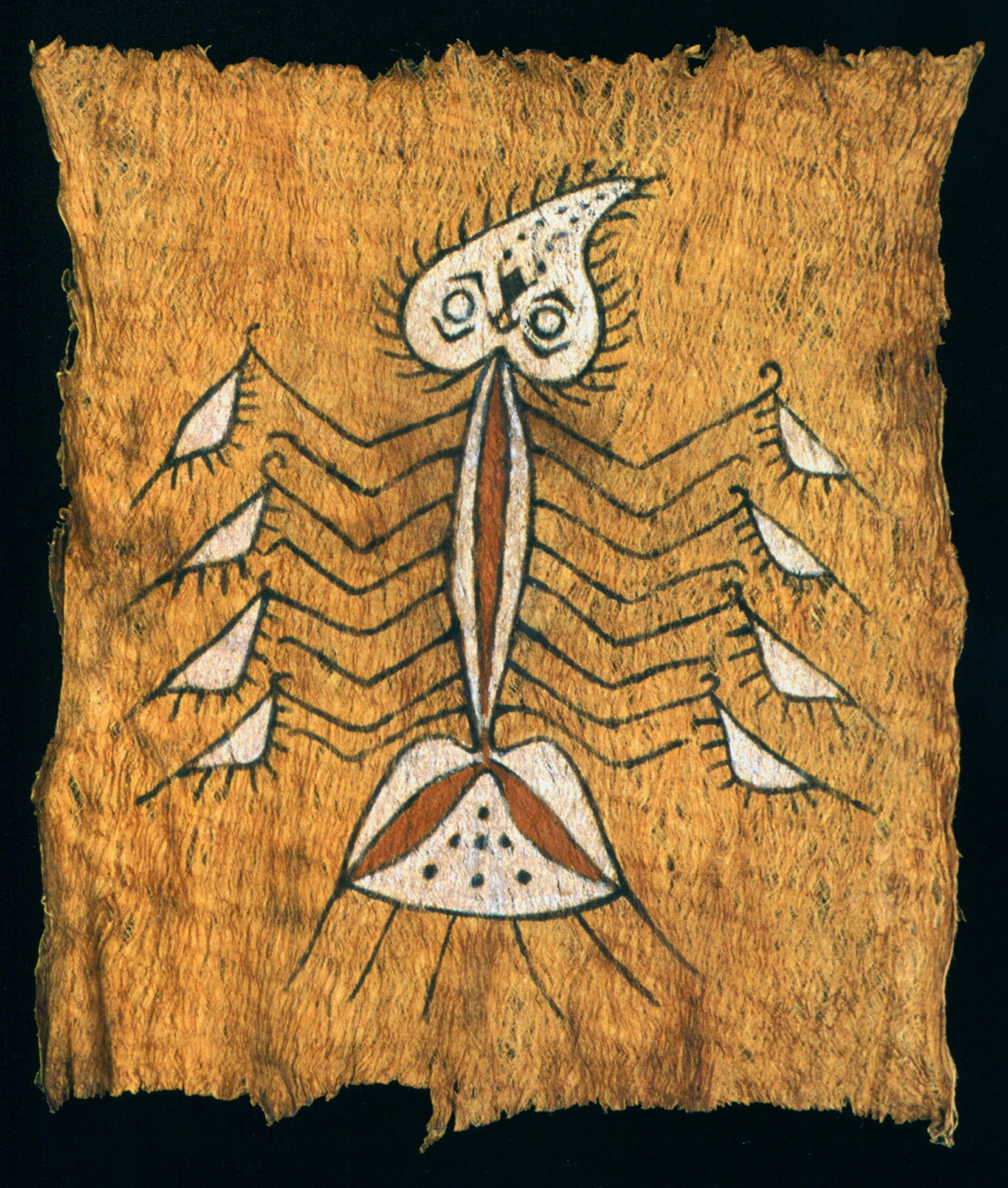1. Irian Jaya, Biak Island, Geelvink bay. Tapa. The feminine spirit symbolizing the eternal reproduction. Beaten bark. 86 x 125 cm. Beginning of the twentieth Century.
2. Irian Jaya, Geelvink Bay. Tapa. Composition of mythical characters and astral symbols". Detail of beaten bark. 95 x 70 cm.
3. Irian Jaya, Humboldt Bay. Tapa. The four faces of the Spirit Creator. Beaten bark. 95 x 70 cm. First half of the twentieth century.
4. Irian Jaya, Humboldt Bay. Tapa. The Spirit Creator that becomes a pair of twins. Beaten bark. 116 x 60 cm.
5. Irian Jaya, Humboldt Bay. Tapa. Mythological representation of a spirit that generates life with his arms. Beaten bark. 80 x 63 cm.
6. Irian Jaya, Lake Sentani. Tapa. Dance loincloth with lizards, spirals and fishes. Beaten bark. 100 x 188 cm.
7. Oro Province, Papua New Guinea. Tapa. Fishes and seaweeds. Beaten bark. 75 x 140 cm.
8. Solomon Islands, Melanesia. Round Tapa with irregular edges. Beaten bark. Diameter 103 cm.
9. Fiji Islands. Tapa with lozenges. Beaten bark. 100 x 188 cm. Circa 1929-1935.
10. Fiji Islands. Tapa with geometric patterns. Beaten bark. 152 x 176 cm.
11. Wallis and Fortuna. Tapa dance costume. Beaten bark. 200 x 160 cm.
12. Wallis and Fortuna. Tapa dance costume. Beaten bark. 180 x 102 cm.
13. Wallis Islands. Tapa. Beaten bark. Width 180 cm.
14. Samoan Islands. Tapa subdivided into sixty square containing floral motifs with four or five petals. Beaten bark. 100 x 170 cm.
15. Samoan Islands. Tapa motifs that representing taboo spaces (where it is forbidden to go). Beaten bark. 185 x 205 cm.
16. Samoan Islands. Tapa with lozenges. Beaten bark. 120 x 175 cm.
17. Samoan Islands. Tapa. Beaten bark. 304 x 218 cm.
Tapa is the generic name used in the Pacific for the cloth made from bast (i.e. the inner bark) of saplings of the paper mulberry (Broussenetia papyrifera), a tree taken from Southeast Asia by the ancestors of the Polynesian peoples several thousands of years ago. In some Pacific islands cloth was also made from the inner bark of the breadfruit (Artocarpus incisus), the banyan (Ficus Indica) and coastal hibiscus trees (Hibiscus tiliaceus). The narrow bark strips are soaked and then beaten for many hours until they are approximately 18 inches wide. The strips are then felted together to make cloth of varying thicknesses. This craft is still practiced in parts of Papua New Guinea, in Vanuatu and in Samoa, but the largest decorated pieces are made in Fiji (masi) and in Tonga (ngatu).
~ Wendy E. Cowling.
The name "Tapa" is coming from two Tahitian words TA or KA that means material and PA that means pleated or beaten.


















